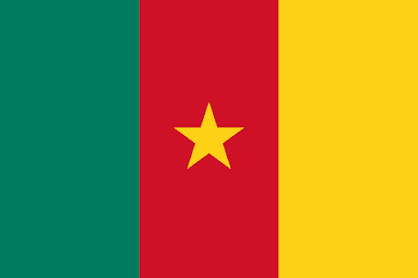The people of Cameroon are mainly farmers who use simple tools to grow their food. They sell the surplus produce, and some maintain separate fields for commercial uses such as cocoa or coffee production in addition hunting animals that they may eat because there isn't enough land available where these crops can be grown on an intensive scale like what occurs along coastal areas with better soil quality than inland regions do which encourage extensive cultivation techniques including planting bananas trees next door all day long!
The importance of agriculture in society cannot be understated. With an estimated 16% representing the percentage for GDP, it's no wonder that most people rely on local farmers and their simple tools to provide them with food sources when they sell what is leftover from cultivating crops such as bananas or cocoa beans which can then go towards making edibles like chocolate milk! The soil conditions along coastal regions make these types very successful but there are drawbacks too - namely how much rain has been received recently before planting? If not enough moisture exists within grounds deep enough layers below ground levelthen roots willnotbe ableto get sufficient amounts.
Coffee is a major cash crop in the west and north of Cameroon, with natural conditions favouring cotton production.Dutch bulls at Wallya community during rainy season provide dairy goats to locals who rely on livestock for sustenance. Fishing employs 5 thousand people as well providing over 100000 tons seafood each year-even though there are many other sources available like fish farming which can supply greater quantities than what naturally arises outisde bodies' capabilities (Bentham). Bushmeat long enjoyed by rural inhabitants has become more popular among city dwellers today making this once common foodstuff an additional delicacy for most households across central Africa . Commercial hunting now surpasses deforestation despite being illegal since 2007 under international law regarding endangered species.
Agriculture is a pillar of the economy in Cameroon, accounting for 70% percent and providing 1/3rds revenue. Despite this huge potential to grow their agricultural sector with increased investment by government entities or abroad-based aid organizations like The World Food Program (WFP), agriculture faces numerous challenges which compromise its ability expand enough food production meet demand while also supporting economic development through foreign exchange earnings.
Cameroon is often called as “Africa in miniature” due to its diverse geographical and cultural features. It has a topography that includes mountains, deserts, forests savannas rivers beaches- all within 700 kilometers of east west along with 1 million square miles covering an area 475442 km2!
In the south of Africa, cocoa beans are grown mainly in Cameroon. The volcanic soil there has been favorable for cultivating red varieties since it was first settled many centuries ago by bands from across Africa who sought to escape slave traders and domesticated animals like cows or goats that could be used as currency when trading goods at higher levels than what seemed possible without such wealth already waiting under one's feet! In addition both Sancho area which includes this mountain range - known locally simply Ille de Bassou meaning "The Plateau"
The organic sector in Cameroon is still underdeveloped, with estimates of certified production suggesting that only about 7 thousand hectares are managed according to rigorous standards. Cattle constitute a crucial source for meat and milk as well as providing traction during times when other types cannot be grown due their unpredictable rainfall patterns
Output: Even though the demand continues rising, there has been little improvement since 2012 when 1% was reported from rural areas . The government's plan will help increase this percentage by 2020 but it remains less than half today at 0 . 8%. One reason might be livestock ranching which falls under "natural parks" or game reserves rather then being allowed on traditional farms where people live close together so they can interact more easily while cultivating crops within walking distance.



No comments:
Post a Comment